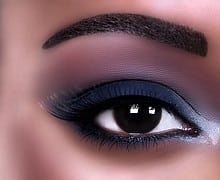An eye doctor can tell a lot about the rest of your body with one simple exam
Your eyes can tell you a lot about your health. An eye doctor can see what’s going on in much of the rest of your body by taking a good look at the arteries, veins and nerves in your eye. That’s why the American Academy of Ophthalmology recommends a baseline eye exam for everyone by age 40, if not before. (If everything looks kosher, your doctor will tell you how often you should have repeat exams.) The benefit? Catching potential problems early—before they are major issues. Here are eight conditions that can be seen in your eyes:
- You’re vitamin A deficient. Have you been experiencing trouble seeing at night? Night vision problems are common in people whose diets are vitamin A deficient. Too little vitamin A can mean a decrease in a pigment called rhodopsin, which controls how the eye perceives light. So load up on foods containing vitamin A, including beef, carrots, spinach and sweet potatoes.
- You’re stressed. Is your vision getting blurry when you burn the midnight oil? Contrary to popular opinion, it’s probably not your computer screen. Stress has been linked to fluid buildup under the retina, causing hazy vision. A study published in the British Journal of Ophthalmology found that 37 percent of people suffering from this condition had elevated stress shortly before being diagnosed. Fortunately blurry vision resolves itself in most people within a few months.
- You have high blood pressure. Hypertension, known as the silent killer because the condition, which can lead to heart disease or a stroke if left untreated, has no visible symptoms. Except in the eyes. High blood pressure can trigger changes in the retina’s tiny blood vessels, which can signal problems with bigger vessels that supply the heart, brain and kidneys. If your eye doctor notices these changes, see a cardiologist right away: A Journal of the American Medical Association study linked retinal changes with an elevated risk of heart failure.
- You have diabetes. Some 30 million Americans suffer from the disease, but only about 8 million have been diagnosed. An eye exam can reveal the problem: A recent study found that diabetes is the chronic health condition most likely to be identified during an eye exam. That’s because high blood sugar levels can manifest in several places in the eye. Though diabetes-related retinal damage is the main cause of vision loss in Americans aged 20 to 74, when caught early (and your blood sugar levels are managed properly), the condition usually doesn’t get worse.
- You have allergies. Do you have under-eye circles from hell? Allergic rhinitis, which affects one in seven Americans and causes inflammation of the mucous membranes in the nose, could be the reason why. Triggers such as pollen or pet dander can clog sinuses and trigger a reaction that causes blood to pool under the eyes, leading to the dark circles. Antihistamines are usually the fix.
- You’re suffering from inflammation. Even though you’ve been clocking eight hours of sleep every night, you wake up with achy, bloodshot eyes. This could be a sign of uveitis–inflammation within the eye, and that can signal inflammation elsewhere in your body. The condition is a sign of a variety of ailments, including psoriasis, Crohn’s disease and rheumatoid arthritis.
- Your thyroid is off kilter. When you look in the mirror, you see a deer-in-headlights staring back at you. This could signal Graves disease, a thyroid condition marked by bulging eyes. Women are especially at risk for Graves; it affects them five to six times more than men and causes eye-related complications in more than 50 percent of sufferers.
- Your nervous system is on the fritz. The eyes can be an early tip-off to nerve disorders like multiple sclerosis. The optic nerve, which transmits details about what you see to your brain, is part of the central nervous system. Roughly 75 percent of MS sufferers have inflammation, called optic neuritis, in this nerve. In nearly 25 percent of cases, this is the first sign (coupled with blurred vision and pain when you move your eyes) that something is wrong.
(Photo: Depositphotos)





